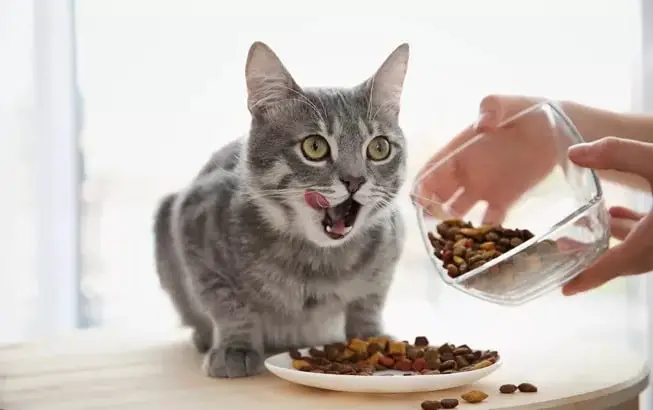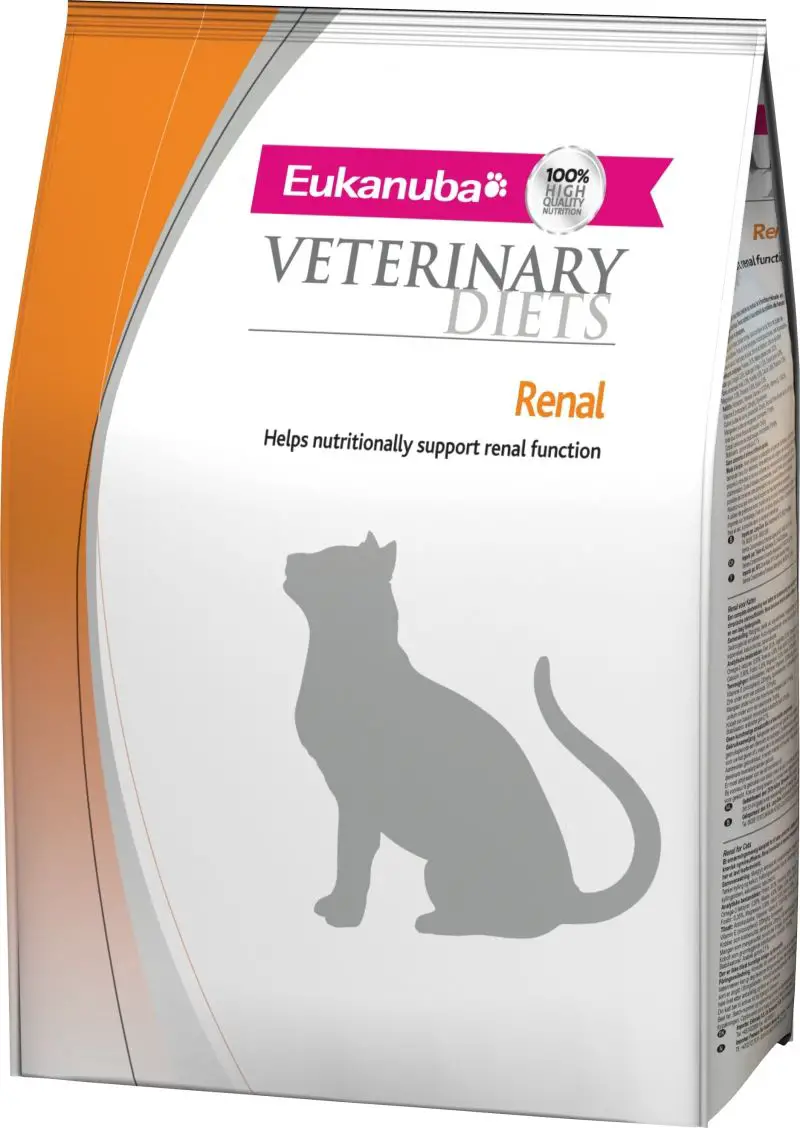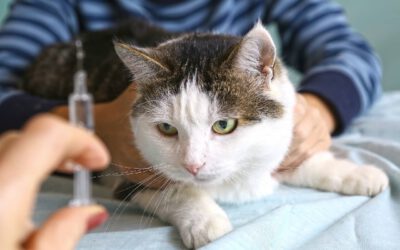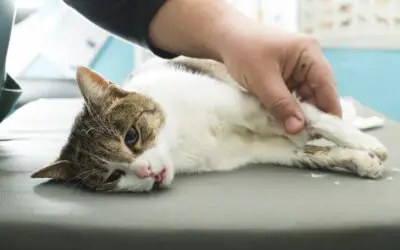Chronic kidney disease (CKD) is one of the most common diseases in cats. Although more research is needed as to which early interventions have the greatest impact, there is plenty of scientific evidence that dietary changes can significantly reduce stress on failing kidneys and increase life expectancy.
It might seem strange to call food a prescription, but research shows that diet change is the best thing we can do for pets with kidney disease to help them feel better and live longer happier lives. For kidney patients, diet is a more important prescription than most medicines
PDF from VNC State Veterinary Hospital (link)
So, we asked our vet Sara-Jane to provide us with her recommended CKD cat foods designed to help cats cope with their renal problems.
Top 3 foods for cats with kidney disease
The following is a list of recommendations. With these products, we can’t reverse kidney damage, but they are designed to reduce stress on the kidneys and minimize any potential future damage, thus increasing life expectancy. These are veterinary specialist diets. Remember to always seek advice from your veterinarian before starting your cat on any specialist diet!
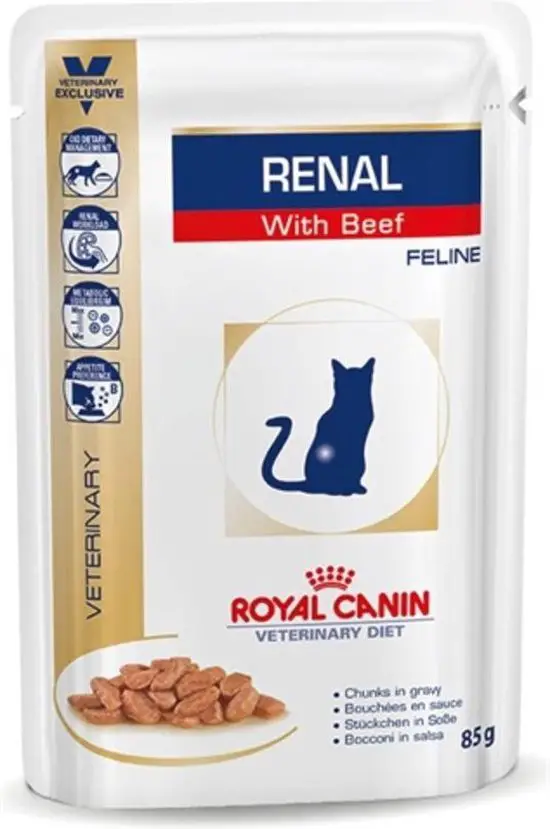
1. Royal Canin Renal
Royal Canin is a well-known brand that specializes in offering specific veterinary diets. Their foods are custom-tailored to the special needs of cats with certain problems.
Royal Canin makes two stages of renal food- Early Renal and Renal. Each stage is uniquely balanced for the needs of cats in this stage of renal failure. They also make a multipack with several flavors of food-perfect for cats with nausea.
This kibble is very rich in antioxidants, which help protect the body against free radicals. These have also been proven useful in preventing and treating various diseases. This diet is chosen by many vets as the recommended product for CKD cats.
Royal Canin Renal Liquid is a similar product: a complete diet for cats, bringing all their vitamins, minerals, and nutritional needs- but as a liquid. Useful for extreme cases, syringe feeding, or for cats with very low appetite.
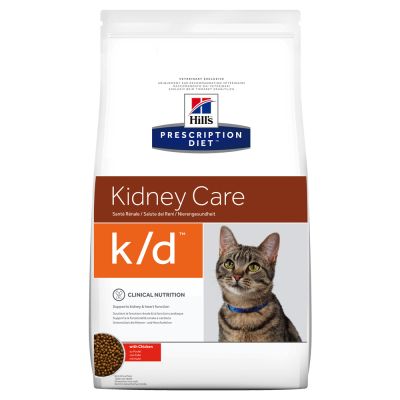
2. Hill’s k/d
Hill’s also sells a very high-quality product that definitely earns a spot among the best kidney diet foods. This product comes in two variants: k/d and Early k/d. This division allows you to roughly optimize your cat’s nutrition for the stage of kidney disease they’re in. Like Royal Canin, they also offer a Starter Kit with various flavors, so you can easily experiment and find the right flavor and texture for your fussy feline.
Hill´s Prescription Diet offers a multitude of clinically tested therapeutic diet products that are used to treat many different kinds of complications.
Prescription diet k/d Kidney Care is specially tailored to address the needs of cats suffering from chronic renal issues:
- Reduced protein – and phosphorus help reduce stress on the kidneys as these contribute significantly to the number of waste products found in the bloodstream
- Extra anti-oxidants help protect the body against roaming free radicals
- Omega-3 fatty acids increase blood flow to the kidneys
- Extra tasty to help with reduced appetite
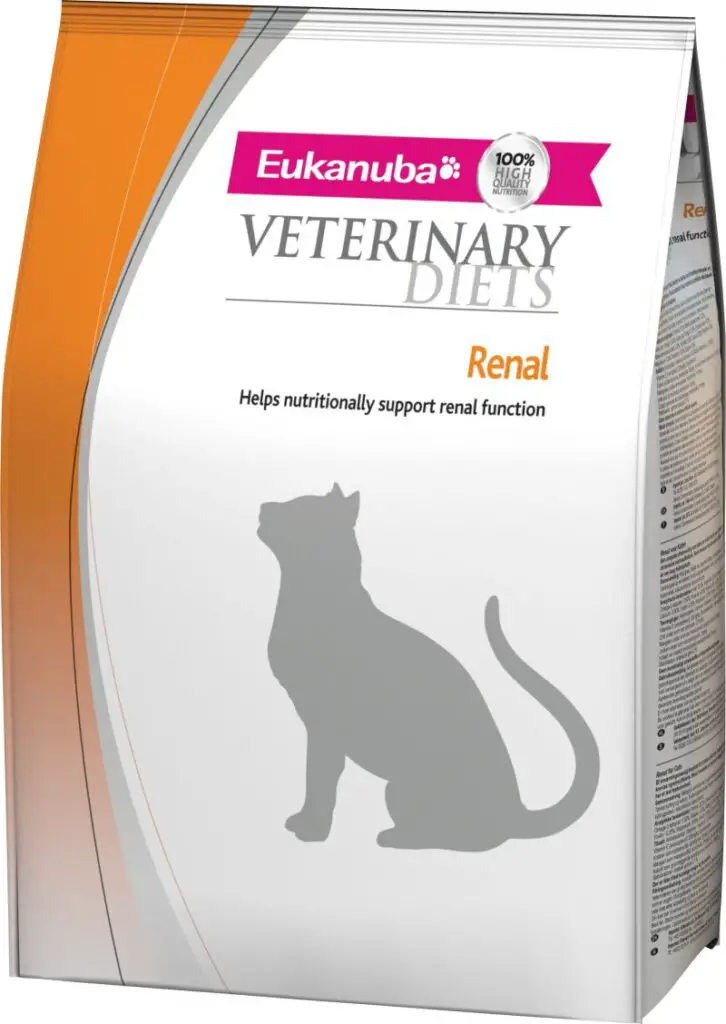
3. Eukanuba Veterinary Diet Renal
Eukanuba makes this renal diet that satisfies the nutritional needs of cats with CKD. It contains extra Omega-3 fatty acids and a patented “nitrogen trap system” that aims to encourage spare nitrogen to be excreted in the feces rather than being passed to the kidneys.
Eukanuba Renal helps lower blood pressure in the kidneys with a carefully crafted balance of omega 3 and – 6 fatty acids. These also work as an inflammatory agent.
Cats with kidney failure often have a reduced appetite, which may eventually lead to weight loss. This renal diet product has a boosted taste and smell, making it easier for your cat to start eating.
- Average protein content: helps to maintain glomerulus filtration speed
- Contains healthy omega-6 and omega-3 fatty acids from fish that help the body on a cellular level
- Low phosphorus content: The soy proteins in this product contain less phosphorus than most other types of protein found in nature. This helps stall the progression of CKD
- Added potassium citrate: helps maintain control over metabolic acidosis
How do I switch my cat to a CKD diet?
Cats will develop a preference for their standard diet after a while. If you discovered that your cat is suffering from CKD, changing to the diet to a more appropriate diet could become difficult. We have an article about changing to a different diet if you’re interested, but the short version is this: make the transition gradual for your cat by mixing the old and the new food together. Overtime (at least one week) you can slowly start to increase the amount of new food in a meal. If your cat has a reduced appetite, warming the food may also help increase palatability.
Switching to a proper cat food for CKD is a very important part of managing chronic renal disease. so it really is worth taking the time to do this properly.
How CKD foods work: managing symptoms through diet changes
As chronic kidney disease progresses through its’ various stages, complications will arise that often require specific diet advice from the vet.
The following are some of the most important dietary properties CKD cat foods have in order to help a cat cope with the various symptoms associated with chronic renal disease:
- Low phosphorus to increase appetite
- Extra water to help with increased thirst (especially wet foods)
- Low calcium to improve the digestion
- High potassium for maintaining a healthy amount of muscle mass
- Low sodium to help combat high blood pressure
We will now provide a list of some of the major symptoms associated with CKD and an explanation as to how they can be managed through diet.
Dehydration
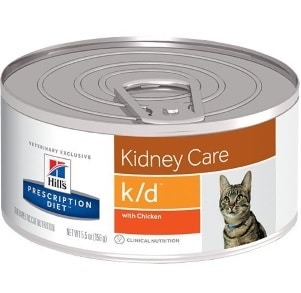
One of the kidneys’ main functions is to conserve water in the body. In CKD the kidneys gradually become less effective, so their ability to conserve water also decreases. A major symptom as a result of renal issues is dehydration and increased thirst. Maintaining a sufficient intake of fluids becomes very important to help support the kidneys in getting rid of waste materials in the blood.
Dehydration can be managed in several ways. The first course of action should be to encourage your cat to drink more water. Canned wet foods are also a great way of increasing fluid intake since they normally contain around 75% water versus maybe 10 – 20% in dry kibble. These canned foods also tend to be more palatable, which helps because nausea and inappetence are also symptoms of CKD.
In more advanced CKD cases, more severe measures may be necessary. These can include intermittent intravenous fluid therapy and intermittent subcutaneous fluid therapy which are often given in a clinic.
Phosphorous
Around 60% of cats with CKD have hyperphosphatemia (high phosphate levels in the blood). Since hyperphosphatemia is associated with a faster rate of disease progression, a diet low on phosphorous is especially important and studies have suggested the beneficial effects of such a diet can be quite dramatic. This can be achieved in one of two ways: through a phosphorous-restricted diet, or by administration of intestinal phosphate binders by mouth.
Most foods for CKD are designed to have low phosphate content. If blood phosphate concentrations remain high despite being on such a diet, further treatment with drugs known as ‘phosphate binders’ to reduce the amount of phosphate absorbed from the intestine may also be indicated. Examples of such binders are lanthanum and calcium acetate.
Some owners find binders (or any medication by mouth!) stressful to administer. Furthermore, when you add anything to a cat’s food, you risk creating a food aversion. There are palatable options available, but this tends to be down to individual kitty preference. Kidney diets are typically phosphorous restricted anyway, in which case oral binders can be reserved for when phosphate increases despite a kidney diet.
Protein
The symptoms of CKD are largely caused by uremia, a medical term for the accumulation of toxic products in the bloodstream as a result of protein breakdown. These toxins are normally filtered and excreted by the kidneys, but in CKD the kidneys are no longer able to keep up.
A restricted protein diet can therefore reduce the symptoms associated with CKD, and improve your cat’s quality of life. Since many meat-based proteins have a high phosphorous content, decreasing protein intake also helps to reduce the total amount of phosphorous in the body. This is a balancing act, however! Too little protein can exacerbate muscle wastage, weight loss, and poor body condition seen with CKD.
Veterinary renal diets are specially formulated to have a reduced- but good quality- protein content, supporting the maintenance of muscle mass. Hills make two prescription diets: k/d Early Stage and k/d (for more advanced disease). The protein content differs to take into account the differing needs early in the disease process, compared with later on.
Protein restriction has to be performed with care, as too little protein can be extremely detrimental to the health of your cat.
Sodium & blood pressure
Cats with CKD are at a higher risk of developing hypertension. High blood pressure has a whole range of damaging effects throughout the body, and certainly doesn’t make it easier for the body to deal with a failing set of kidneys.
A mildly restricted sodium (salt) content in the diet can help manage high blood pressure. Most CKD foods are therefore low in salts.
When blood pressure is too high to manage through the diet, a group of drugs known as vasodilators can be administered to widen the arteries and lower the blood pressure. Another drug called amlodipine is also very effective.
Potassium
Potassium excretion can increase in CKD. Hypokalemia (low blood potassium levels) is common in cats with CKD; it can be very dangerous and worsen kidney damage. Other possible side effects are muscle weakness and inappetence. While some kidney diets provide higher potassium levels when compared with regular diets, this really needs to be tailored to each individual cat’s needs.
Potassium levels are measures by analysis of a blood sample. When low potassium is identified, a specific potassium supplement would then be given, which are available in various forums like tablets, gels and powders that can be added to the meals. An example of a supplement that is given orally is VetPlus Kaminox.
Omega-3 & 6 (Fatty acids)
Omega-3 fatty acids have a protective effect on the kidneys; by helping to maintain blood flow through the kidneys and by reducing inflammation. These are often found in fatty fish like salmon and trout.
Fiber
Soluble fiber can help maintain a healthy bacterial population in the colon, which increases elimination of nitrogenous (protein break down) waste via the feces. It also helps to prevent constipation, which is common in cats with CKD.
Alkalinizing agents
Acid can build up in the body in CKD, so added bicarbonate (or another alkalinizing agent) can help to counteract this.
Calories
Due to protein restriction, renal diets need to be calorie dense with moderate fat levels. This is to help maintain body weight and to improve palatability.
Did you like this article? Share it with your friends!

